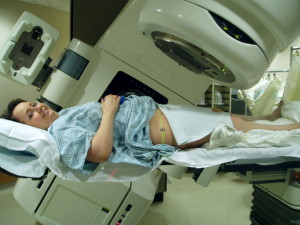The therapeutic gold standard of cancer chemotherapy is to reduce tumor load – to kill as many cancer cells within the tumor as possible. Although this chemotherapeutic approach works, recent studies indicate its one-pointed focus is misplaced.

New discoveries in stem cell research may reduce the need for less-effective radiation therapy. (Click to enlarge. Image source: Wikimedia Commons.)
In order to treat cancer, you must also focus on the cancer stem cells, which are largely unaffected by most chemotherapy approaches. Cancer stem cells are defined as those cells within a tumor that can self-renew and drive production of new tumor cells. It seems the more you kill tumor cells, the faster and more frenetically cancer stem cells work to produce new tumor cells. With increasing frequency, physicians in the conventional cancer care world are tuning in to this realization.
Daniel Haber, M.D., Director of the Massachusetts General Hospital Cancer Center, says:
“If the cancer-stem-cell hypothesis is true, treating the majority of dividing cancer cells will shrink a tumor but won’t cure the cancer unless we can target the cancer stem cells themselves. That could explain why tumor shrinkage, the gold standard for measuring a drug’s effectiveness doesn’t always translate into longer survival time for patients.”
Max S. Wicha, M.D.,founding director of the University of Michigan Comprehensive Cancer Center and one of the leading experts on breast cancer stem cells, echoed Dr. Haber’s thoughts:
“The goal of all our existing therapies has been to kill as many cells within the tumor as possible. Studies suggest that the current model may not be getting us anywhere because we have been targeting the wrong cells with the wrong treatments. Instead, we need to develop drugs targeted at the tumor’s stem cells. If we are to have any real cures in advanced breast cancer, it will be absolutely necessary to eliminate those cells.”
Yes, shrinking cancer tumors is important, because the tumors may grow to a size large enough to impinge upon other organs and tissues. But if the tumor is to be completely eliminated and the patient is to become cancer-free, targeting the stem cells along with the tumor cells is the key to success.
Fortunately, several therapies offered at the Hernandez Center for Adjunctive Cancer Care address cancer stem cells. High-dose intravenous (IV) vitamin C (HDIVC) is foremost among these therapies. HDIVC also targets tumor cells, reducing tumor burden. In several laboratory studies, curcumin (the Indian spice known as turmeric) has shown potent ability to target and destroy cancer stem cells. Curcumin is poorly absorbed orally, so at the Hernandez Center we administer curcumin via IV, guaranteeing absorption.
– Dr. Marcel
References:
- U-M scientists find “stem cells” in human breast cancer
- How cancer stem cells protect themselves
- Stem cells and the pathways to aging and cancer
- Targeting cancer stem cells: a new therapy to cure cancer patients





